Uganda is a vibrant East African nation located in the heart of the continent. With a rich and diverse cultural heritage, Uganda’s traditional music, dance, and art reflect its culture, history, and values. Here is an overview of this unique cultural tradition.
Traditional Music
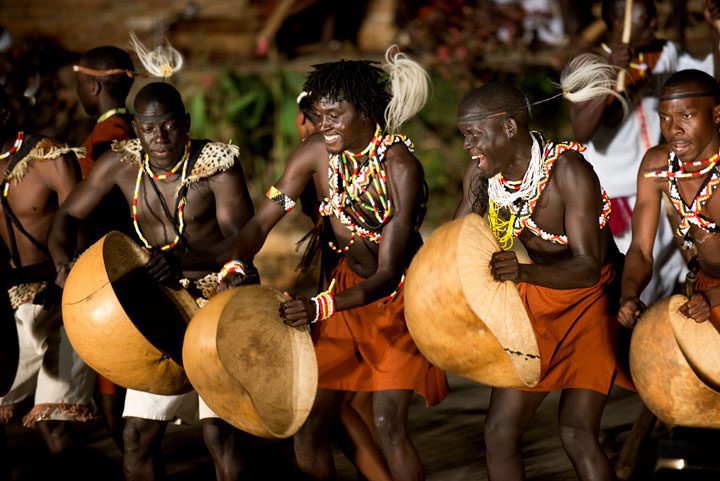

Musical traditions have been an important part of African culture for centuries and have been passed down from one generation to the next. Oral traditions have been supplemented by recordings of Western explorers, academics and other research that sought to capture African music and classify it into broader categories such as African music, Global music and World music. Despite this, many African scholars are wary of foreigners who do not understand African culture and the role of traditional art.
Uganda has a rich musical heritage with a variety of music genres across the country. In western Uganda, traditional styles like Ekitaguriro, Ekizina Ky’abaishiri, Kurungi Ngweyo and Eky’omutwe gw’abarwane are performed with traditional instruments including the Endigindi (one-stringed fiddle), Amakondere (trumpet), Engoma (drums), Omukuri (flute) and Enanga (trough zither). These musical styles and instruments are an intrinsic part of the culture, particularly for those from the Banyankore, Bakonzo, Batoro and Banyoro ethnic groups. Additionally, the traditional courtship dance of the Banyoro Batoro people in the region, known as Orunyege-Ntogoro, is used to amicably select partners; a critical event, as those not found to be skillful in dancing remained bachelors! An additional dance which is becoming more contemporary is Bigwala, which is traditionally performed when celebrating a coronation or funeral, but is now found at weddings and other celebrations.
In Eastern Uganda, the Basoga people’s traditional music, Bigwala, is performed with a set of five or more single-tone gourd trumpets, accompanied by a particular dancing style. The lyrics address the history of the tribe and emphasize its identity as well as issues such as leadership, marital problems and common socio-economic norms and practices. The Bamasaba people of the same region are renown for their Kadodi song, which tells a story of a young man being forced to undergo circumcision, and is accompanied by drumming on gourds, struck with bicycle spokes.
The Acholi people of Northern Uganda are similarly renowned for their traditional music and dance, for example Anjolinaye and Larakaraka. The former explores the features of an African girl, while the latter is designed as a solace to those who were abducted by the Lord’s Resistance Army. Ding Ding music, also seen in the North, is characterized by high-energy, sweet melodies and intense, syncopated rhythms. All of these elements form an integral part of the culture, translated into modern forms in the education sector and now commonly seen at weddings, Cultural galas and other celebrations.
Clearly, traditional music has a strong presence in Uganda both historically and today, offering a variety of genres, instruments and stories. Its significance and popularity have allowed it to remain relevant. Although there may be disputes about whose music is being portrayed and recorded, it is evident that traditional music will remain ever-present in Uganda.
Traditional Dance
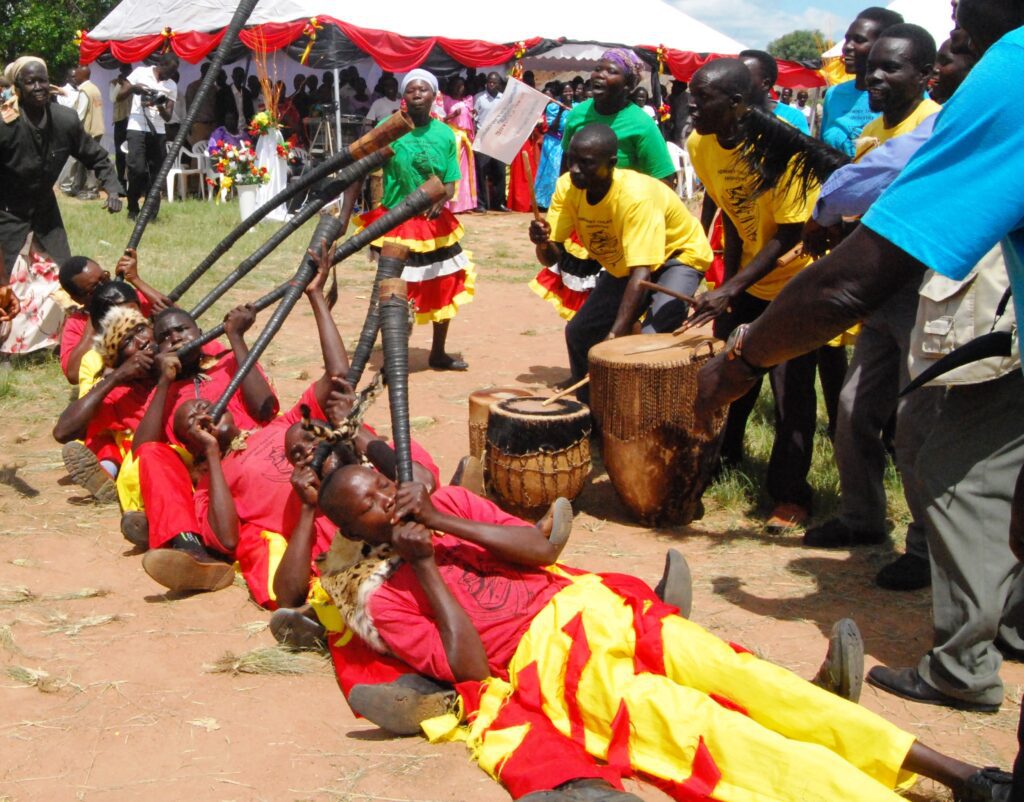

Uganda is a country of diverse cultures, each with its own traditional dance. The Baganda people, for example, are renowned for their energetic and celebratory royal court dance called Ngoma. The Bukusu people perform the Luuka dance for traditional occasions such as weddings and funerals, and the Batooro people do the Runyege dance, a courtship ritual in which men show off theirexpertise and ability.
The Karamajong have the Edonga dance, which is done by jumping as high as possible as a sign of enthusiasm, while the Lugbara create joyous melodies with their Agwara dance and instrument. The Mwanga dance is a ceremonial initiation practice that includes bells, fiddles, and flutes, and the Iteso people take part in the Bamugenyi, which is a courtship dance that features the sounds of drums and flutes. No matter the tribe, occasion, or type of dance, Ugandan traditional dances continue to be part of an exciting and vibrant culture that binds the country together.
To experience these dances, visitors can arrange for cultural visits during their Ugandan safari, or attend performances at places like the Ndere Cultural Centre in Kampala.
Traditional Art
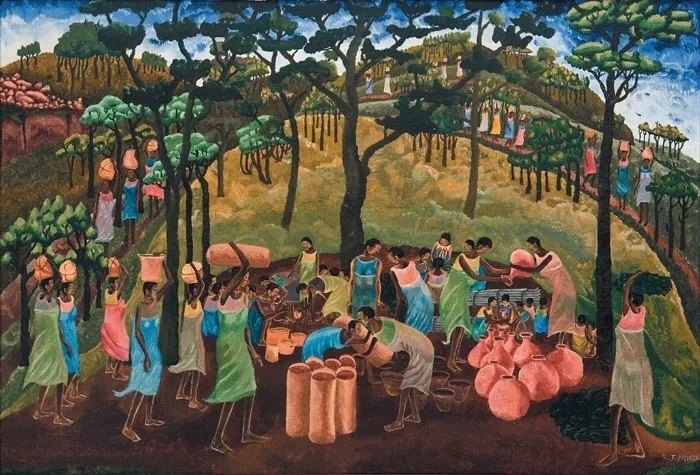

Ugandan traditional art is rich and diverse and can be found across different media such as pottery, textiles, paintings, and sculpture. It is deeply rooted in the country’s history and many of the styles are strongly linked to the different cultures, regions and tribes which comprise the country.
Pottery is one of the oldest traditional art forms in Uganda and is associated with the older agrarian cultures of the Baganda, Banyoro, Bacwezi, and Batooro people. These cultures had a strong belief in the power of fertility and this belief often manifests itself in the ornate designs which can still be found on many traditional Ugandan pots.
Textiles are also an important part of Ugandan traditional art. Traditional hand-woven fabrics feature vibrant colors and intricate patterns. These fabrics are often used to make clothing and bed coverings, but they can also be used as decoration by the Bagisu, Basoga, Basamia, and Basembi peoples.
The barkcloth of Uganda is also an important part of its traditional art. This cloth is made by pounding and weaving tree bark into a cloth and is traditionally used by the Bagisu, Basoga, and Basamia people. It has been used for hundreds of years for clothing and decorative purposes.
Traditional Ugandan paintings often feature the country’s landscapes and wildlife, allowing the artist to capture the beauty of the country. In addition, the different cultures of the country often have their own distinct styles of painting, such as those of the Baganda, Bamunanise, Banyoro, and Batooro peoples.
Lastly, Ugandan sculpture is an incredibly important art form. Sculptors work with material such as stone, wood, and clay to create figures, masks, and other representations of people and animals. This art form is common among the Bagisu, Baganda, Basoga, and Basamia peoples.
Together, these art forms showcase the rich culture and history of Uganda and help to preserve the unique culture and traditions of the different people who live there.
Traditional Clothes
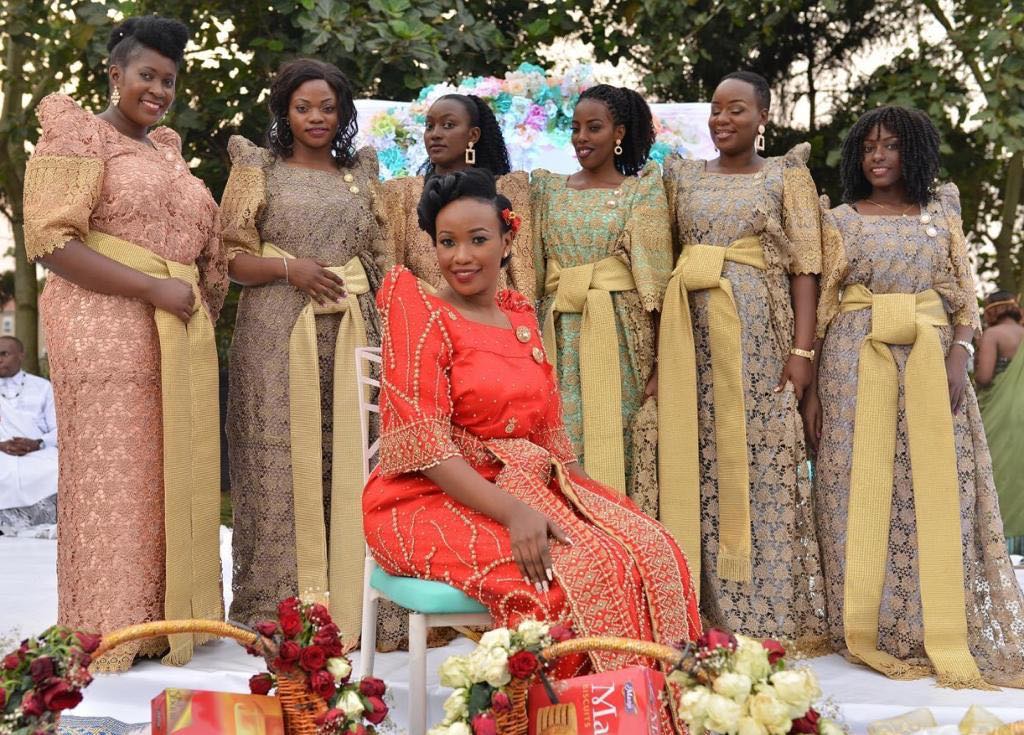

Ugandans cherish their culture as it gives them a sense of belonging. Different prominent cultures in Uganda have various cultural dressing for various ceremonies and occasions. For example, The Buganda men wear Kanzu, the Basoga men wear grass skirts and the Karomojong men wear eplan vests. Western Uganda cultural dressing is similar to the Masai men and includes multi-coloured wraps and straw hats. The Bahima women have a more elaborate dress code with Kitambi, Eshuka and Omwenda. Northern Uganda tribes also have relatively similar cultural dressing, with Karamoja men wearing coloured sheets, vests and sticks and Acholi men wearing ostrich feathers and calabashes. It is important to adhere to certain etiquette when wearing cultural attire, such as not altering the design or letting it sweep the ground, and not twerking or crank dancing when wearing Gomesi. Additionally, Ugandans have adapted to western way of dressing, with men also wearing blazers and ties and women wearing gomesis and kitenges.
Traditional Food
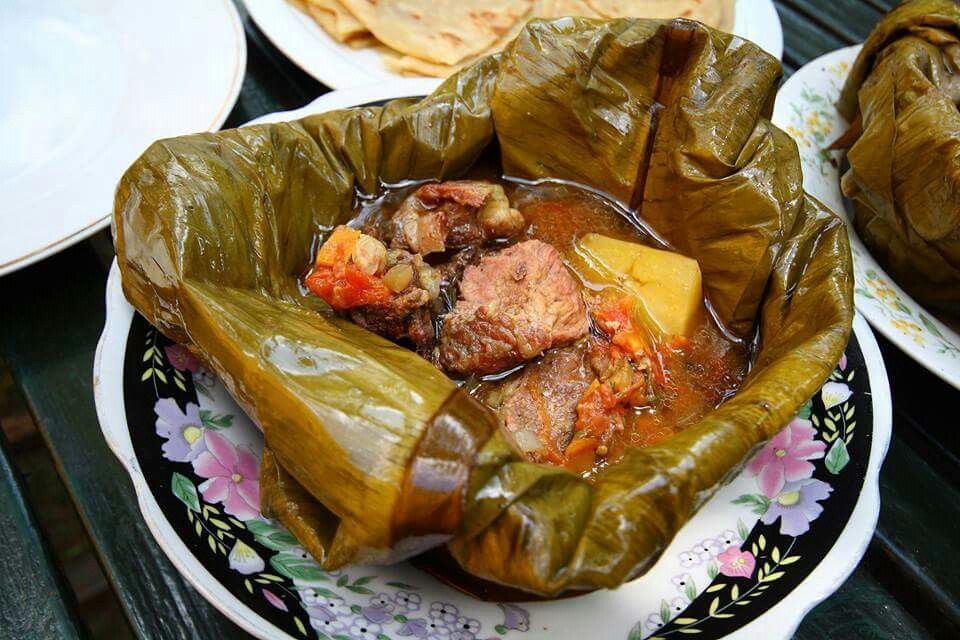

This is the most popular dish among the Baganda and Uganda as a whole; Luwombo. It was invented by Kabaka Mwanga’s personal chef in 1887 and is served with smoked banana leaves, chicken, fish, and ground nut (peanut) sauce. Eshabwe is the traditional meal for the Banyankole of western Uganda which is prepared with ghee, salt and cold boiled water.
Firinda is a dish enjoyed by the Batooro that is made with beans, tomatoes, onions, and ghee or smoked meat. The Bakonjo enjoy a tasty dish called Sombe which is cassava leaves, smoke fish, salt and palm oil. Malakwang is a meal from northern Uganda made with sour vegetables, groundnuts, and can be served with sweet potatoes and millet bread.
Matooke is the staple food of Uganda made of plantains, which can be boiled or steamed in banana leaves. Akaro is a mixture of millet or sorghum flour and cassava boiled in a thick paste. Uganda lakes also provide fish such as Mukene and Nkejje which can be smoked, sundried, fried, or boiled. Posho is a common meal of Uganda, made with maize flour and is served with tomatoes, onions and ground nuts. Sweet potatoes and Irish potatoes are also enjoyed and prepared in various ways.
Lastly, Ugandans enjoy snacking on chapatti, Rolex, roasted groundnuts (peanuts), samosa, mandazi and roasted simsim. All these meals can be found while on a Uganda Safari tour with Gracious Tours and Travel.
Conclusion
Uganda is home to a rich and diverse culture, with traditional music, dance, and art that reflect its unique history and values. From the energetic Kadongo Kamu to the vibrant traditional art, exploring Uganda’s cultural heritage is a rewarding and enriching experience.
Key Takeaways:
- Traditional Ugandan music is often accompanied by drums and is heavily influenced by the traditional rhythms and dances of the Baganda.
- Traditional Ugandan dance is full of energy and can range from playful to highly dramatic.
- Common examples of traditional Ugandan art include beading, mask-making, carving, and painting, as well as woven papyrus baskets.



One Response